Papers by Tatiana Sizonenko
BRILL eBooks, Jun 6, 2022
This is an open access chapter distributed under the terms of the CC BY-NC-ND 4.0 license.
The Land between Two Seas: Art on the Move in the Mediterranean and the Black Sea 1300–1700, 2022
This is an open access chapter distributed under the terms of the CC BY-NC-ND 4.0 license.

Author(s): Sizonenko, Tatiana | Abstract: This dissertation is a historical study of Gentile Bell... more Author(s): Sizonenko, Tatiana | Abstract: This dissertation is a historical study of Gentile Bellini's artistic visit to Constantinople and its artistic products--the painted and the medal Portrait of Mehmed II and drawings of Ottoman people--that articulates Bellini's role as an agent of artistic exchange. Although recent publications purport to celebrate Bellini's intercultural experience, they remain within what I call the Renaissance and documentary paradigms: Bellini's works are treated either as a universal achievement of Renaissance art that amazed the Sultan, or as documents of social life and customs in Constantinople. My dissertation, in contrast, argues that these works are a logical outgrowth of the practices of visiting court artists, the increasingly prominent role of images in political and cultural communications between courts and states, and the rising role of artists in diplomacy, which developed during the second part of the fifteenth century on t...
Author(s): UC San Diego Department of Visual Arts; Sizonenko, Tatiana | Abstract: This is the cat... more Author(s): UC San Diego Department of Visual Arts; Sizonenko, Tatiana | Abstract: This is the catalog for the exhibition Provoking Change, curated by Tatiana Sizonenko, Ph.D. The exhibition was at the University Art Gallery on the UC San Diego campus, October 12th through December 9th, 2017, as part of the Visual Arts @ 50: Art Into Life series. The artists were Alumni of the department: David Avalos, Doris Bittar, Becky Cohen, Joyce Cutler-Shaw, Brian Dick, Kip Fulbeck, Heidi Hardin, Robert Kushner, Hung Liu, Fred Lonidier, Jean Lowe, Kim MacConnel, Susan Mogul, Allan Sekula, Elizabeth Sisco/Louis Hock/David Avalos, and Deborah Small/David Avalos. The catalog was designed by Gabi Schaffzin and Nick Lesley.
Author(s): UC San Diego Department of Visual Arts; Sizonenko, Tatiana | Abstract: This is the cat... more Author(s): UC San Diego Department of Visual Arts; Sizonenko, Tatiana | Abstract: This is the catalog for the exhibition Extensions of Photography, curated by Tatiana Sizonenko, Ph.D. The exhibition was at the University Art Gallery on the UC San Diego campus, October 7th through December 9th, 2016, as part of the Visual Arts @ 50: Art Into Life series. The artists were Faculty, Emeritus Faculty, and Alumni of the department: Amy Adler, Eleanor Antin, Kaucyila Brooke, Becky Cohen, Brian Cross, Moyra Davey, John Craig Freeman, Kip Fulbeck, Anya Gallaccio, Katie Grinnan, Nina Katchadourian, Fred Lonidier, Jean Lowe, Kim MacConnel, Babette Mangolte, Ruben Ortiz-Torres, Patricia Patterson, Martha Rosler, Elizabeth Sisco, Deborah Small, Phel Steinmetz, Blaise Tobia, and Ruth Wallen. The catalog was designed by Gabi Schaffzin.
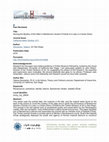
California Italian Studies, 2016
This article uses the portrait date, the costume in the title, and the original seals found on th... more This article uses the portrait date, the costume in the title, and the original seals found on the back of the picture to unveil the mystery of the sitter and to clarify the provenance of Bartolomeo Veneto’s Portrait of a Lady in a Green Dress (1530) from the Timken Museum of Art in San Diego. This portrait is the last signed work of exceptional quality and preservation by the Renaissance master. With rare exception, most of Bartolomeo’s sitters remain anonymous. This paper identifies one of Bartolomeo’s patrons and associates the portrait with an intimate circle of Isabella D’Este. The Timken portrait reveals a complex game of identity in Renaissance courts. Rulers like Isabella d’Este strategically deployed the power and agency of Roman imperial fashions to construct and project their dynastic identity and social status. Through bestowing her exquisite hairdos as gifts, the Marchesa was able to reinforce her ideals and symbolic values. Her daughter-in-laws displayed their allegiance to Isabella visually by wearing hairdresses and costume accessories modeled on her proprietary designs. In turn, Isabella’s Roman-inspired hairstyles aided her in the construction and transmission of her own feminine virtue and political aspirations.
Recent scholarship has theorized the place of written text within the development of Renaissance ... more Recent scholarship has theorized the place of written text within the development of Renaissance portraiture, revealing instances where inscriptions and other written words assist in bridging the spatial and temporal gap between the image and the viewer, fashioning the identity of the sitter, and shaping the artist's professional persona and social standing.

Recent works on art and art theory in Venice have clarified the connection between Venetian liter... more Recent works on art and art theory in Venice have clarified the connection between Venetian literary forms and artistic styles and cultural identity of Venice’s elite. My paper builds on the insights of S. Settis into the patronage of Giorgione in relation to the development of the genre of poesie and the arguments of M. Tafuri about the relationship between artistic style and civic identity among the Venetian elite. Most recently, Puttfarken made a case that Aristotle’s Poetics defined Titian’s mythological painting starting from the 1530s. This paper argues that Giorgione some three decades earlier already adopted Aristotelian ideas, albeit in a somewhat different form. As this paper shows, the promotion of Aristotelian ideas about art and imagination was a cherished sign of Venetian identity for a certain class of patrons of the arts among the elite of Venice, as Venice was the Italian city-state most tied to Greek or Hellenistic culture.
The early years of the cinquecento in Venice could be characterized by significant changes both in city culture and in studia humanitatis. The transformation of Venice into the printing capital of Europe went hand in hand with the development of private humanist academies and with increased activities of distinguished Greek scholars that ignited interest in Aristotelian texts. The activity of the Academy of Aldus Manutius, a major Greek press in Italy, is a prime example. Indeed, in the late 1490s and the early 1500s, Venice was the major center of Aristotelianism and a center of production of commentaries relating Aristotle to other fields of knowledge. As Schmidt discussed, Aristotle provided a framework for a broadening synthesis of knowledge. The discourse on human intellect and human faculties of learning and imagination was the core of heated debates that penetrated the circle of literati and the patrician class, who directly sponsored publishing texts in Aldine Press or held their own private academies for intellectual debates. The shift in studia humanitatis in the beginning of cinquecento had an immediate impact on the development of visual arts.
With this historical background in mind, this paper demonstrates that the debates centered on the Aristotelian concept of human intellect and the discussion of the relation of painting and poetry informed the practice of painting cultivated by Giorgione and his circle. My evidence comes from the study of Giorgione’s close affiliation with the court of Caterina Cornaro, the circle of Pietro Bembo, and with Greek scholars in Venice, and many other indications of his deep engagement with the theory of painting in its relationship to poetic arts. Crucial to my discussion is a close reading of Three Philosophers which I interpret as a response to these debates, intended to appeal to a particular audience with certain ideological values and preferences in aesthetics. Traditionally, Giorgione’s paintings have been understood as creations of free imagination, alluding to allegorical situations (J. Anderson), fables, or as pastoral evocations of melancholic mood and contexts (D. Rosand). Drawing on Puttfarken’s book this paper will argue that Giorgione’s poetic compositions are better understood as directly associated with Aristotelian categories of ingenium, license, fantasià, and mimesis that legitimized painting as an intellectual activity worthy of literati.

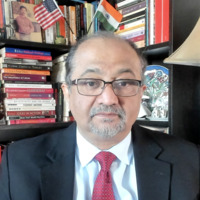
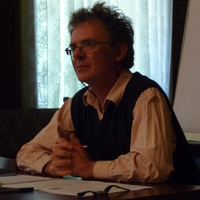

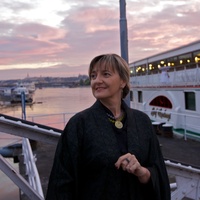

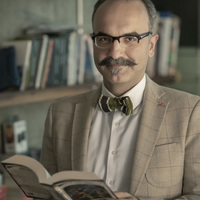
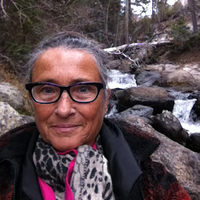

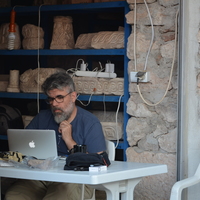
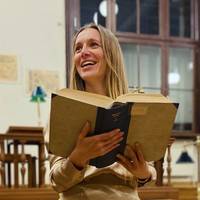
Uploads
Papers by Tatiana Sizonenko
The early years of the cinquecento in Venice could be characterized by significant changes both in city culture and in studia humanitatis. The transformation of Venice into the printing capital of Europe went hand in hand with the development of private humanist academies and with increased activities of distinguished Greek scholars that ignited interest in Aristotelian texts. The activity of the Academy of Aldus Manutius, a major Greek press in Italy, is a prime example. Indeed, in the late 1490s and the early 1500s, Venice was the major center of Aristotelianism and a center of production of commentaries relating Aristotle to other fields of knowledge. As Schmidt discussed, Aristotle provided a framework for a broadening synthesis of knowledge. The discourse on human intellect and human faculties of learning and imagination was the core of heated debates that penetrated the circle of literati and the patrician class, who directly sponsored publishing texts in Aldine Press or held their own private academies for intellectual debates. The shift in studia humanitatis in the beginning of cinquecento had an immediate impact on the development of visual arts.
With this historical background in mind, this paper demonstrates that the debates centered on the Aristotelian concept of human intellect and the discussion of the relation of painting and poetry informed the practice of painting cultivated by Giorgione and his circle. My evidence comes from the study of Giorgione’s close affiliation with the court of Caterina Cornaro, the circle of Pietro Bembo, and with Greek scholars in Venice, and many other indications of his deep engagement with the theory of painting in its relationship to poetic arts. Crucial to my discussion is a close reading of Three Philosophers which I interpret as a response to these debates, intended to appeal to a particular audience with certain ideological values and preferences in aesthetics. Traditionally, Giorgione’s paintings have been understood as creations of free imagination, alluding to allegorical situations (J. Anderson), fables, or as pastoral evocations of melancholic mood and contexts (D. Rosand). Drawing on Puttfarken’s book this paper will argue that Giorgione’s poetic compositions are better understood as directly associated with Aristotelian categories of ingenium, license, fantasià, and mimesis that legitimized painting as an intellectual activity worthy of literati.
The early years of the cinquecento in Venice could be characterized by significant changes both in city culture and in studia humanitatis. The transformation of Venice into the printing capital of Europe went hand in hand with the development of private humanist academies and with increased activities of distinguished Greek scholars that ignited interest in Aristotelian texts. The activity of the Academy of Aldus Manutius, a major Greek press in Italy, is a prime example. Indeed, in the late 1490s and the early 1500s, Venice was the major center of Aristotelianism and a center of production of commentaries relating Aristotle to other fields of knowledge. As Schmidt discussed, Aristotle provided a framework for a broadening synthesis of knowledge. The discourse on human intellect and human faculties of learning and imagination was the core of heated debates that penetrated the circle of literati and the patrician class, who directly sponsored publishing texts in Aldine Press or held their own private academies for intellectual debates. The shift in studia humanitatis in the beginning of cinquecento had an immediate impact on the development of visual arts.
With this historical background in mind, this paper demonstrates that the debates centered on the Aristotelian concept of human intellect and the discussion of the relation of painting and poetry informed the practice of painting cultivated by Giorgione and his circle. My evidence comes from the study of Giorgione’s close affiliation with the court of Caterina Cornaro, the circle of Pietro Bembo, and with Greek scholars in Venice, and many other indications of his deep engagement with the theory of painting in its relationship to poetic arts. Crucial to my discussion is a close reading of Three Philosophers which I interpret as a response to these debates, intended to appeal to a particular audience with certain ideological values and preferences in aesthetics. Traditionally, Giorgione’s paintings have been understood as creations of free imagination, alluding to allegorical situations (J. Anderson), fables, or as pastoral evocations of melancholic mood and contexts (D. Rosand). Drawing on Puttfarken’s book this paper will argue that Giorgione’s poetic compositions are better understood as directly associated with Aristotelian categories of ingenium, license, fantasià, and mimesis that legitimized painting as an intellectual activity worthy of literati.